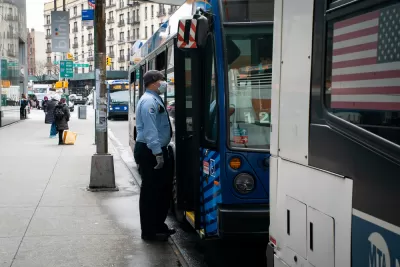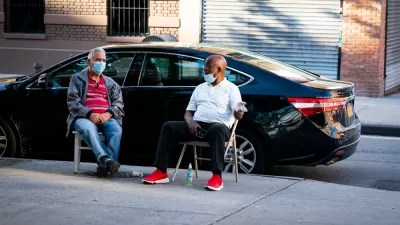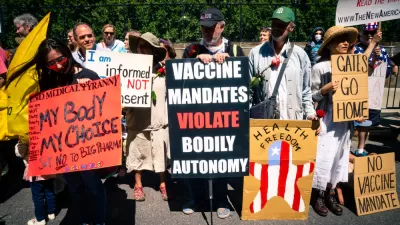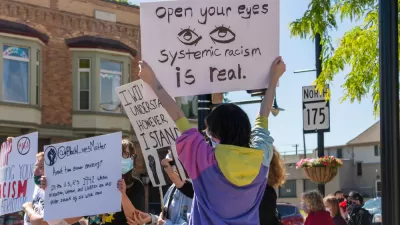Black and Latino Americans in the United States are dying from COVID-19 at a much higher rate than whites. The foundation for the tragedy has been laid for decades.

ProPublica offered the first in-depth news analysis of the high infection rates of coronavirus in Black communities in Milwaukee, where misinformation and mistrust made it difficult to convince many Black people to protect themselves.
The long history of structural racism also sowed the seeds for this public health crisis in the Black community, according to the authors of the story, Akilah Johnson and Talia Buford. "Environmental, economic and political factors have compounded for generations, putting black people at higher risk of chronic conditions that leave lungs weak and immune systems vulnerable: asthma, heart disease, hypertension and diabetes."
As documented by the ProPublica team, the disease has inflicted damage on Black communities in Michigan, Louisiana, North Carolina, and Illinois. Since then, numerous articles have repeated and supplemented these findings as the extent of the human costs of the pandemic have continued to skew across racial lines. Here's a sample of additional news coverage of the racial data on coronavirus infections in the United States, including attention eventually paid to New York City, the geographic location experiencing the largest outbreak in the United States:
- What the Racial Data Show (The Atlantic, April 6)
- The coronavirus is infecting and killing black Americans at an alarmingly high rate (The Washington Post, April 7)
- Black Americans Face Alarming Rates of Coronavirus Infection in Some States (The New York Times, April 7)
- NY releases racial COVID-19 data (City & State New York, April 8)
- Virus Is Twice as Deadly for Black and Latino People Than Whites in N.Y.C. New York Times (The New York Times, April 8)
The thread of environmental injustice runs throughout these data. People of color are dying more of COVID-19 because of environmental and planning policies that expose these communities to higher rates of pollution and because neighborhoods are segregated by occupation and class.
As for potential responses to the current public health crisis, Joe Barrett, Coulter Jones, and Ebony Reed report in a paywalled Wall Street Journal article about how mayors are responding to the racial inequities apparent in the public health outcomes of COVID-19, and The New York Times editorial board added its two cents about how to save lives in the Black and Latino communities during the pandemic, including releasing better data, speeding medical care for Black and Latino Americans ("These disparities in access and outcomes call out for more fundamental changes in health care policy in the United States," according to the editorial), providing alternative housing for workers and others who live in large households and have no way to isolate themselves if they get sick, and potentially dispatching the National Guard to distribute food and other services.
At some point during the recovery from this public health and economic crisis, it will be time for planners and policy makers to make fundamental changes to the way communities are planned and built in the United States, similar to the changes the New York Times editorial proposes for the healthcare industry.
FULL STORY: Early Data Shows African Americans Have Contracted and Died of Coronavirus at an Alarming Rate

Study: Maui’s Plan to Convert Vacation Rentals to Long-Term Housing Could Cause Nearly $1 Billion Economic Loss
The plan would reduce visitor accommodation by 25,% resulting in 1,900 jobs lost.

North Texas Transit Leaders Tout Benefits of TOD for Growing Region
At a summit focused on transit-oriented development, policymakers discussed how North Texas’ expanded light rail system can serve as a tool for economic growth.

Using Old Oil and Gas Wells for Green Energy Storage
Penn State researchers have found that repurposing abandoned oil and gas wells for geothermal-assisted compressed-air energy storage can boost efficiency, reduce environmental risks, and support clean energy and job transitions.

Santa Barbara Could Build Housing on County Land
County supervisors moved forward a proposal to build workforce housing on two county-owned parcels.

San Mateo Formally Opposes Freeway Project
The city council will send a letter to Caltrans urging the agency to reconsider a plan to expand the 101 through the city of San Mateo.

A Bronx Community Fights to Have its Voice Heard
After organizing and giving input for decades, the community around the Kingsbridge Armory might actually see it redeveloped — and they want to continue to have a say in how it goes.
Urban Design for Planners 1: Software Tools
This six-course series explores essential urban design concepts using open source software and equips planners with the tools they need to participate fully in the urban design process.
Planning for Universal Design
Learn the tools for implementing Universal Design in planning regulations.
Ascent Environmental
Borough of Carlisle
Institute for Housing and Urban Development Studies (IHS)
City of Grandview
Harvard GSD Executive Education
Toledo-Lucas County Plan Commissions
Salt Lake City
NYU Wagner Graduate School of Public Service





























